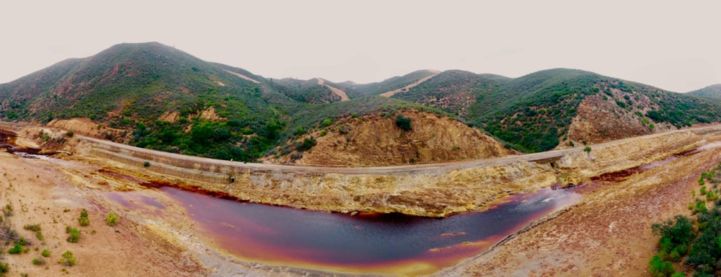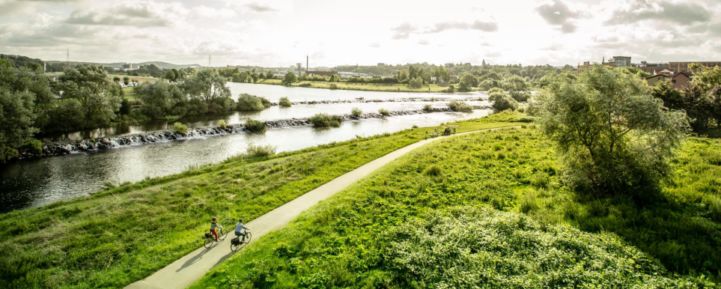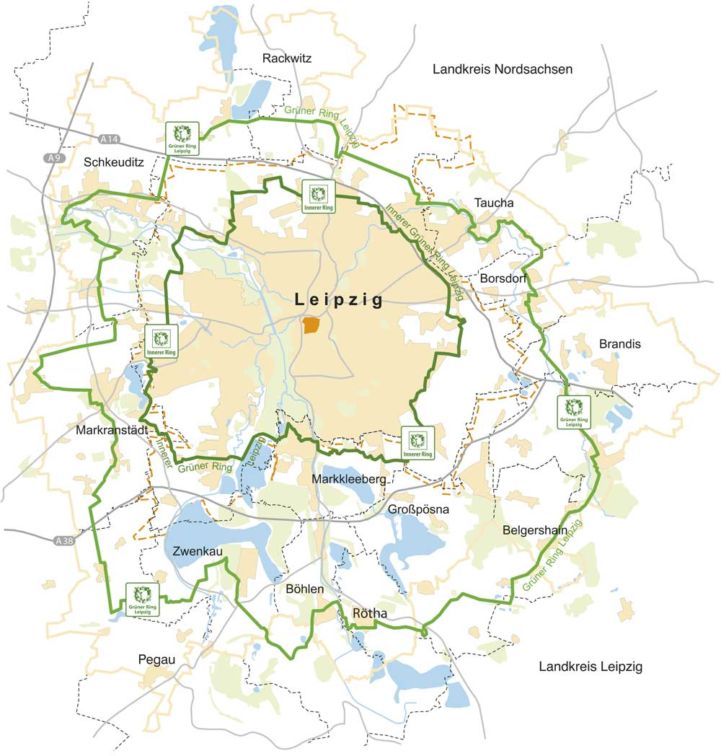ECO-CICLE Good Practices: Protected areas’ recovery and heritage
The ECO-CICLE project, running from June 2018 to June 2022, is an Interreg Europe project. One of the key deliverables of this project is the selection and dissemination of 12 good practices, meaning successful initiatives (e.g. methodologies, projects, processes or techniques) carried out under one of the Interreg Europe Programme’s topics – in this case, the ‘Environment & Resource Efficiency’. These highlight great achievements in cycle tourism across Europe, belonging to 7 fundamental categories: infrastructure, advanced services, cycle tourism in natural areas, promotion, financing, planning & management and intermodality. Read more in our previous ECO-CICLE Good Practices article: “Connecting Spaces through Cycle Networks”.
This second article of the series focuses on regional initiatives from Andalusia in Spain and North-Rhine-Westphalia and Saxony in Germany. Despite their different geographical origins, these good practices have the similar objective to care for protected areas and heritage sites located along new cycle routes, also helping with recovery after degradation where necessary.
Via Verde Camino Naturel del Rio Tinto

The Diputación Provincial de Huelva in Andalusia is in charge of this good practice, the objective of which is to transform the Río Tinto Natural Pathway into a cyclable route of 102 km. The route will run through a unique landscape, from the source of the river in "La Peña del Hierro" to the remarkable endpoint "Muelle de la Rio Tinto Company Limited".
The development of this route through the Rio Tinto riverside is a real challenge due to the technical conditions: the cycle route goes through a unique ancient mining landscape that requires bridges or tunnel restorations and the protection of other heritage aspects located along the track. The process has started with a 5.5 km pilot project funded by a 400,000 euros investment from the Diputación de Huelva.
This good practice belongs to the ‘financing’ category because the technical challenge is strongly connected with funding difficulty. Future works will need imaginative and well-planned financial solutions to gather enough funds for the infrastructure. Works should comprise ground improvement for degraded areas due to ancient mining activities, taking into account the relevance of heritage items potentially impacted by such an activity.
This is a good example of an intervention in a degraded area as landscape has been shaped by the mining activities which took place here over several centuries. Today, after the disappearance of the commercial mining, the areas have suffered depopulation and underemployment despite their rich historical heritage. The uniqueness of the landscape, related to abandoned mining industry, can be an added value for tourism.
This good practice can be exported to extensive areas all over Europe with similar conditions following the decay of mining industry.
Find out more at qr.turismohuelva.org.
Marisma Odiel (circular cycling pathway)

This second good practice is also from Huelva and concerns the building a cycle route around protected marshlands situated in the Estuary North of River Odiel, which are at risk because of the development of urban border areas, whilst conserving the marsh’s coastal facades. The Junta de Adalucia is in charge of this good practice.
The scheme is focusing on a 33-km long piece of multimodal infrastructure aimed at pedestrians and cyclists, which runs mostly on existing tracks and pathways in the surroundings of the "Parque Natural de las Marismas del Odiel" (Natural Park of the Odiel Marshes). The main users and beneficiaries are cyclists and hikers, but also the local population who will benefit from the marsh’s border enhancement, enabling them to reconnect with this outstanding landscape of high ecological value.
It is a good example of how to address a common problem of urban peripheries, especially when touching valuable environmentally protected areas such as marshes. Thinking of cycle tourism as a booster to recover landscapes at risk of degradation and making it compatible with environmental values can be a source of inspiration in other areas facing the same challenge.
This good practice belongs to the ‘cycle tourism in natural areas’ category as it gives a concrete example of sustainable cycle tourism development, taking natural areas’ protection into consideration. It strengthens collaboration between public and private entities, including citizen's associations pursuing the improvement of urban borders preserving environmental values of the marshes.
Find out more at qr.turismohuelva.org.
Ruhr Valley Cycle Path

We move now to the region of North Rhine-Westphalia in Germany, where Regionalverband Ruhr is in charge of the development of the Ruhr Valley Cycle Path (RVCP) – RuhrtalRadweg. This cycle path follows the Ruhr River and combines industrial, natural and cultural heritage along it. The RVCP was officially opened in 2006 and is one of the primary German riverside cycle paths.
This 230-kilometre route is characterized by a relevant natural and historical heritage: forests, heathland, mountains, many traces of the industrial era, which are symbolic of the development and history of the region. Along the way, there are interesting sites: the medieval town centre in Arnsberg, the Mutten Valley, industrial heritage sites and the redeveloped Duisburg Inner Harbour. The cycle path has uniform signs with place and kilometre information. In the former industrial landscape of the Ruhr region, an attractive network of cycle paths and the ecological redevelopment of large forest areas have led to a significant territorial image improvement.
The project includes a working group for infrastructure (covering routing, certificates, construction, signposting etc.), led by Regionalverband Ruhr, and a working group for marketing (covering concepts, basic decisions, applied marketing etc.), led by Ruhr Tourismus GmbH. The main challenge encountered has been to involve stakeholders with different public and private interests, (regional authorities, tourism associations, hospitality businesses, recreational institutions), by creating cooperation and geographical networking-based working groups.
This good practice belongs to the ‘planning & management’ category as it concerns the successful planning and management of a cycle route, taking into account the unique cultural heritage of the region. There is increasing evidence showing the success of this cycle path. For instance, the RVCP has been certified as a “4-star quality cycling route” by the German Cyclists’ Association (ADFC) since 2010, and there has been up to a 40% increase in turnover for businesses along the route between 2006 (opening of the route) and 2011.
Find out more at ruhrtalradweg.de.
Leipzig's Grüner Ring

The final good practice for this article is the Grüner Ring in Leipzig, Germany. This is a regional association of cities and municipalities which ws founded in 1996 and that wants to increase the attractiveness of the City of Leipzig and its surrounding area. In recent years, the Grüner Ring Leipzig has developed two large-scale cycling routes in and around Leipzig. In the next few years, the focus will be on the qualitative expansion of the former cycling route "Äußerer Grüner Ring", which extends over 134km passes through 14 municipalities.
The area around Leipzig is characterized by former mining grounds which are being revitalized. The flooding of the open pit mines led to the development of an extensive lake landscape and connection between lakes and rivers which became the most important local recreation area. Ecological aspects are thus very important for the development of sustainable tourism around Leipzig.
The necessary recommendations for measures to be implemented are developed within the framework of the ECO-CICLE project by Aufbauwerk, with the support of the external service provider StadtLabor and regional stakeholders. The qualification of the new “Grüner Ring Leipzig - Cycling Route” intends not only to strengthen the potential for cycling tourism in the surrounding Leipzig region, but also the importance of bicycles for the development of existing natural areas.
This good practice belongs to the ‘infrastructure’ category as it concerns the development of cycling infrastructure. In 2016, the Grüner-Ring-Leipzig Cycling Route (GRL-R) became part of the regional main cycle route in the “SachsenNetz Rad” - the official network of cycle paths of the Free State of Saxony.
Find out more at gruenerring-leipzig.de/radfahren and in this article (in German).
Next time we will highlight the last of the good practices selected in the frame of the ECO-CICLE project, focusing on dedicated services provided to cycle tourists, such as cycling-friendly accommodation and culinary options, bicycle travel certifications and multimodal connections along cycle routes. Find out more about ECO-CICLE on the project’s website.
Author(s): Florence Grégoire